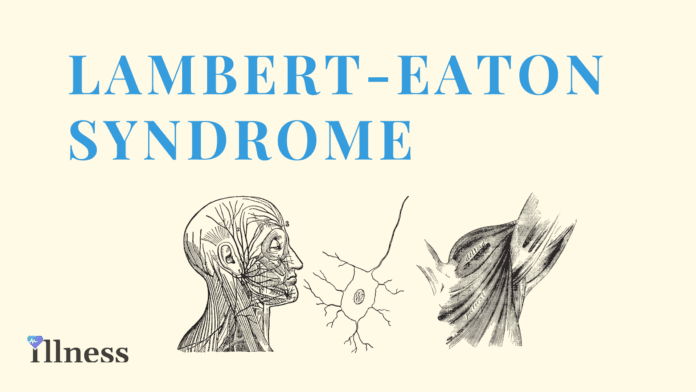Overview Of Lambert-Eaton Syndrome
Lambert-Eaton syndrome (LES) is a rare disorder in which faulty communication between nerves and muscles leads to muscle weakness.
Commonly Associated With
Myasthenic syndrome; Eaton-Lambert syndrome; Lambert-Eaton myasthenic syndrome; LEMS; LES
Causes Of Lambert-Eaton Syndrome
LES is an autoimmune disorder. This means your immune system mistakenly targets healthy cells and tissues in the body. With LES, antibodies produced by the immune system attack nerve cells. This makes nerve cells unable to release enough of a chemical called acetylcholine. This chemical transmits impulses between nerves and muscles. The result is muscle weakness.
LES may occur with cancers such as small cell lung cancer or autoimmune disorders such as vitiligo, which leads to a loss of skin pigment.
LES affects men more often than women. Common age of occurrence is around age 60 years. LES is rare in children.
Symptoms Of Lambert-Eaton Syndrome
Weakness or loss of movement that can be more or less severe, including:
- Difficulty climbing stairs, walking or lifting things
- Muscle pain
- Drooping of the head
- The need to use the hands to get up from a sitting or lying position
- Problems talking
- Problems chewing or swallowing, which may include gagging or choking
- Vision changes, such as blurry vision, double vision, and problem keeping a steady gaze
- Weakness is generally mild in LES. Leg muscles are mostly affected. Weakness may improve after exercise, but continuous exertion causes fatigue in some cases.
Symptoms related to the other parts of the nervous system often occur, and include:
- Blood pressure changes
- Dizziness upon standing
- Dry mouth
- Erectile dysfunction
- Dry eyes
- Constipation
- Decreased sweating
Exams & Tests
The health care provider will perform a physical exam and ask about the symptoms. The exam may show:
- Decreased reflexes
- Possible loss of muscle tissue
- Weakness or paralysis that gets slightly better with activity
Tests to help diagnose and confirm LES may include:
- Blood tests to look for the antibodies that attack the nerves
- Electromyography (EMG) to test the health of the muscle fibers
- Nerve conduction velocity (NCV) to test the speed of electrical activity along nerves
- CT scan and MRI of the chest and the abdomen, followed by bronchoscopy for smokers may be done to exclude cancer. PET scan may also be done if a lung tumor is suspected.
Treatment Of Lambert-Eaton Syndrome
The main goals of treatment are to:
- Identify and treat any underlying disorders, such as lung cancer
- Give treatment to help with the weakness
- Plasma exchange, or plasmapheresis, is a treatment that helps remove from the body any harmful proteins (antibodies) that are interfering with nerve function. This involves removing blood plasma that contains the antibodies. Other proteins (such as albumin) or donated plasma are then infused into the body.
Another procedure involves using intravenous immunoglobulin (IVIg) to infuse a large amount of helpful antibodies directly into the bloodstream.
Medicines that may also be tried include:
- Drugs that suppress the immune system’s response
- Anticholinesterase drugs to improve muscle tone (although these are not very effective when given alone)
- Drugs that increase the release of acetylcholine from nerve cells



